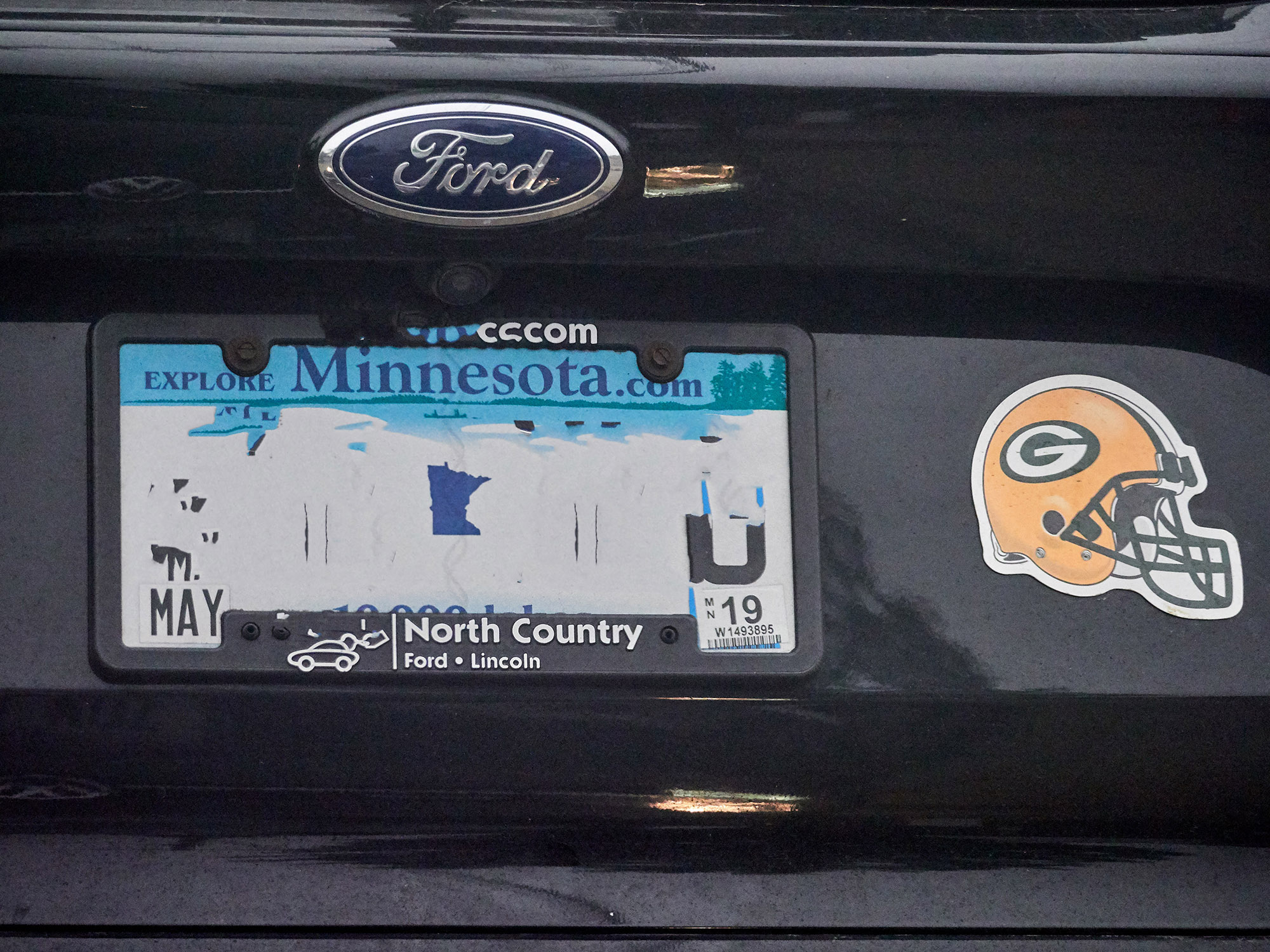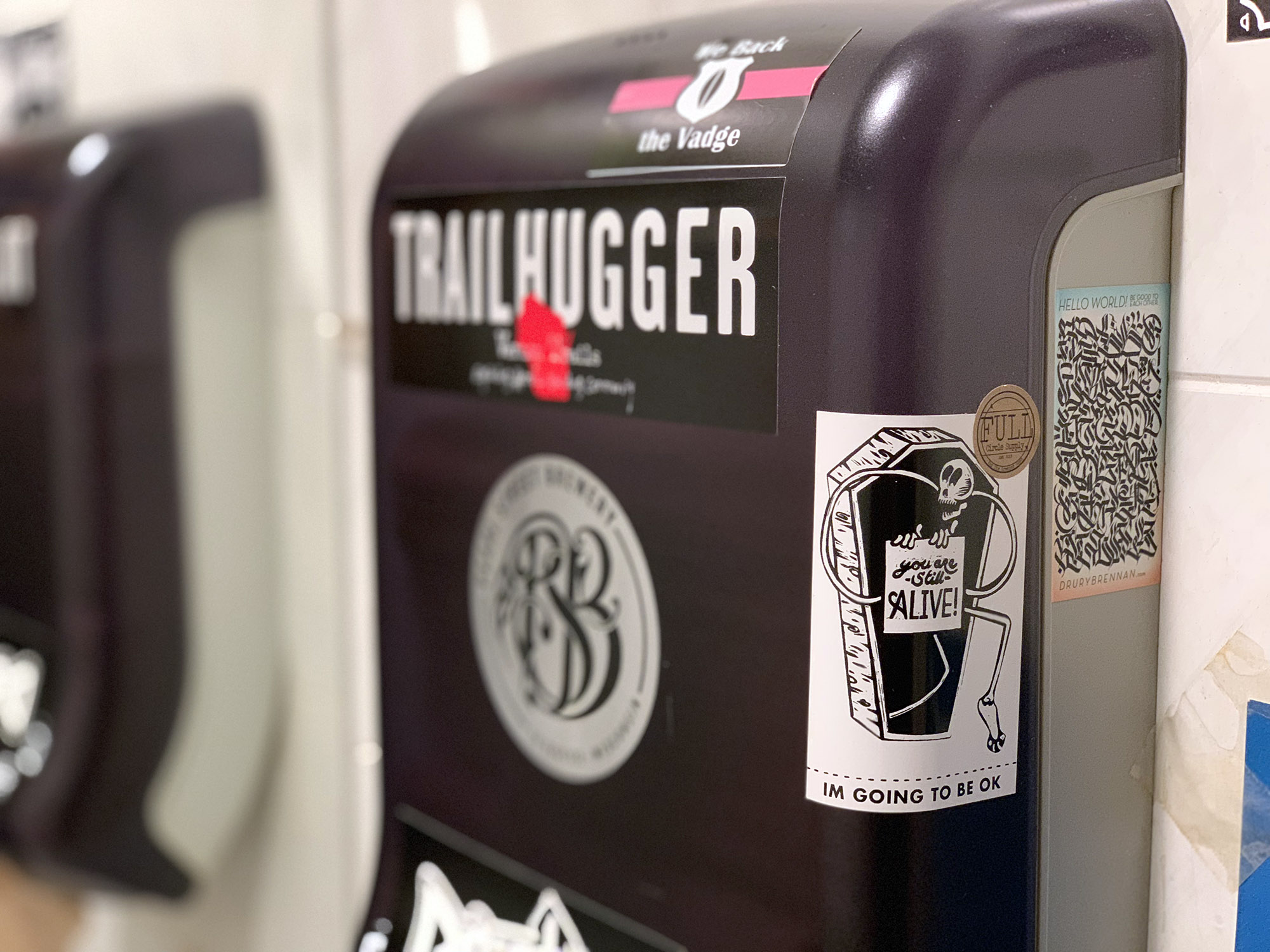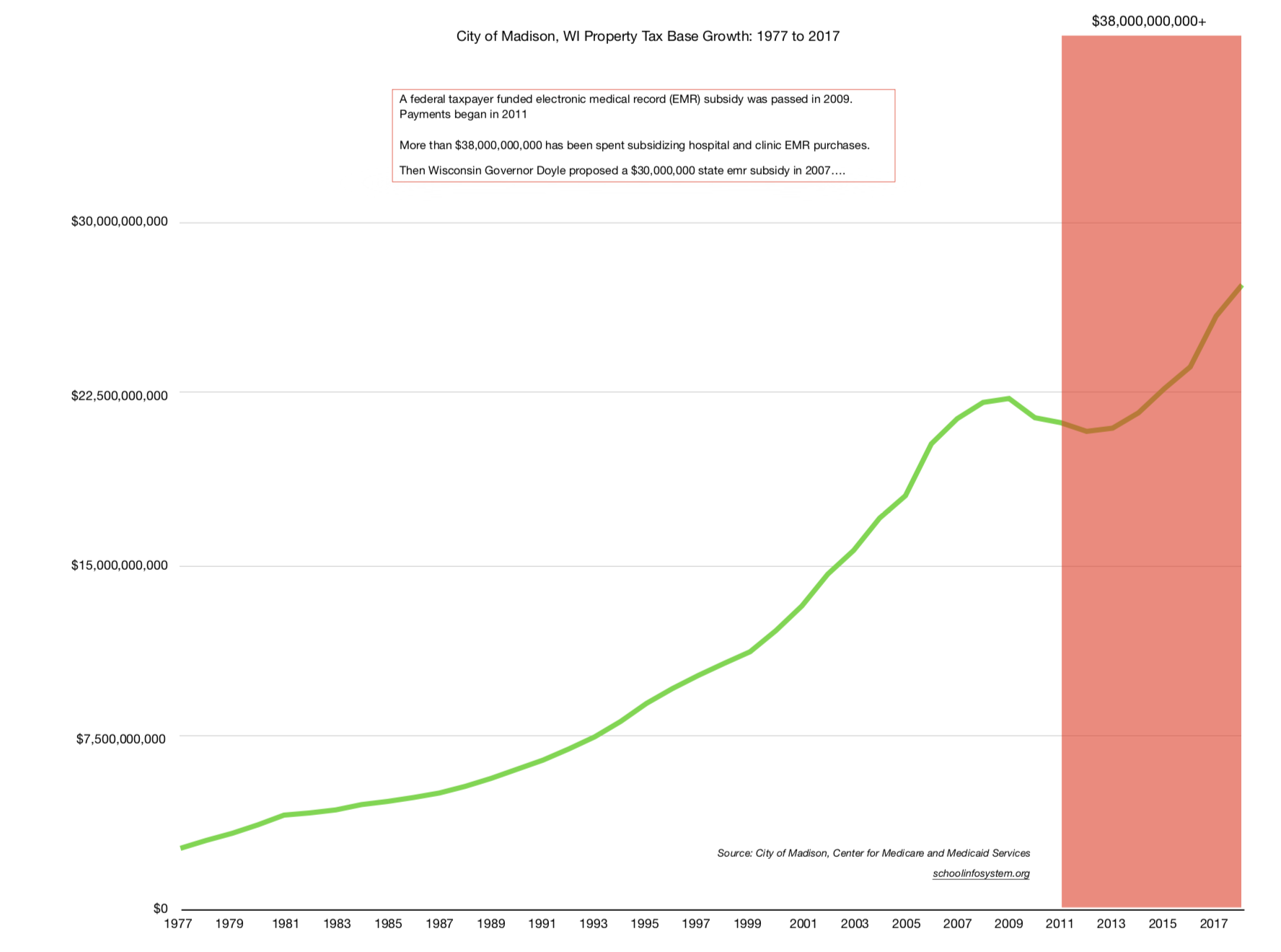iPhone (re)selling: Air India Edition
UPDATE: 10.20.2018 “With more than half of all iPhone buyers opting for installment plans”
The latter half of September, summer into fall for those of us north of the equator, has become a Groundhog Day [1] of sorts for me. A new iPhone is announced. I place an order and survey the market for my now nearly one year old model.
I begin with the eBay app, continue to Craigslist, then review commercial offers, from firms such as Gazelle and more recently the Apple Store app, conveniently displaying an estimated value during the purchase process.
For me, Gazelle and Apple’s offer represent the “bottom” of the market. eBay seems to reliably display a few euphorically priced examples, providing the top.
So equipped, I proceed. I’ve done the range over the years with mostly good results.
This year, I posted photos on Craigslist at a middling price. I received 6 offers (and one obvious scam) within 60 minutes and made arrangements to meet the successful bidder at a local coffee and tea establishment.
The buyer added his SIM card to my unlocked iPhone X, then connected to the internet via the coffee house’s wifi service. He passed the cash to me and handed the iPhone to his mother, bound for Delhi in the morning.
I later learned that they had been acquiring inventory for much of the day. “People in India love iPhones, but they are very expensive”.
Fittingly, this experience provided an answer to my question on secondary market iPhone value in light of Apple’s efforts to push new model prices up [2].
While contemplating the market, I wondered how the following facts might affect future cash buyer demand?
A. Cellular network operators (an oligopoly in the United States) have a bottomless pit of financing and contractual lock-in techniques. How many Americans understand the concept of an “unlocked iPhone”?
B. Apple is promoting an iPhone Upgrade program, with monthly payments “beginning at $37.41“. A recent Apple Store visit revealed a table full of iPhones displaying monthly payments on their screens. [3]
C. Apple is getting into the used hardware purchase and remarketing game, joining many auto manufacturers’ “Certified Pre-Owned” [4] experience. “There is nothing new under the sun” – Ecclesiastes 1:9.
D. Cellular operators are bundling services in an effort to to maintain, if not grow revenues. [5]
E. A meaningful introduction of the e-sim [5] offers both Apple and the cellular operators, fueled by Apple Pay (Apple’s own “currency” – why not?) new price, experience and contractual spaghetti opportunities. [6]
I sense that it will become more difficult to simply purchase an iPhone, unlocked. Perhaps Apple will use future price signals to help us do the right thing and pay monthly..
Apple Pay awaits our glance.
[1] Groundhog Day.
[2] A Dediu chart
[3] iPhone Upgrade Program
[4] CPO
[5] T-Mobile offers a Netflix bundle while Verizon is promoting a “free” six month Apple Music subscription.
[6] Apple e-sim. AT&T, T-Mobile and Verizon support Apple’s e-sim. Presumably the required deal making software has been completed.
P.S. Jean-Louis Gassee has used the term “cashectomy“, occasionally while discussing cellular operators. I seem to recall that Mr. Gassee applied the term to the early Apple + Cingular (AT&T) relationship that launched iPhone v1.
P.S. You Probably Bought Your iPhone With This Bank’s Help. Its Stock Is Worth Buying, Too by Lawrence Strauss:
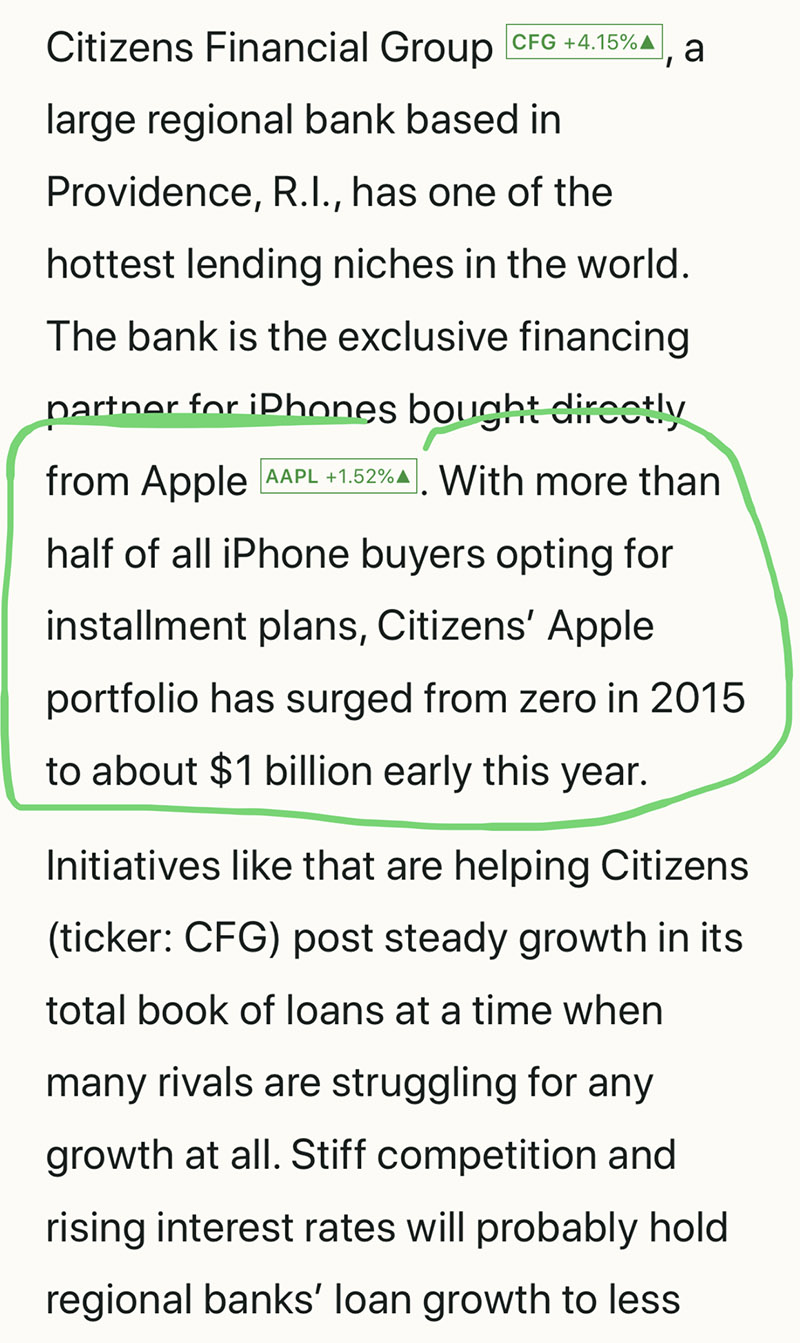
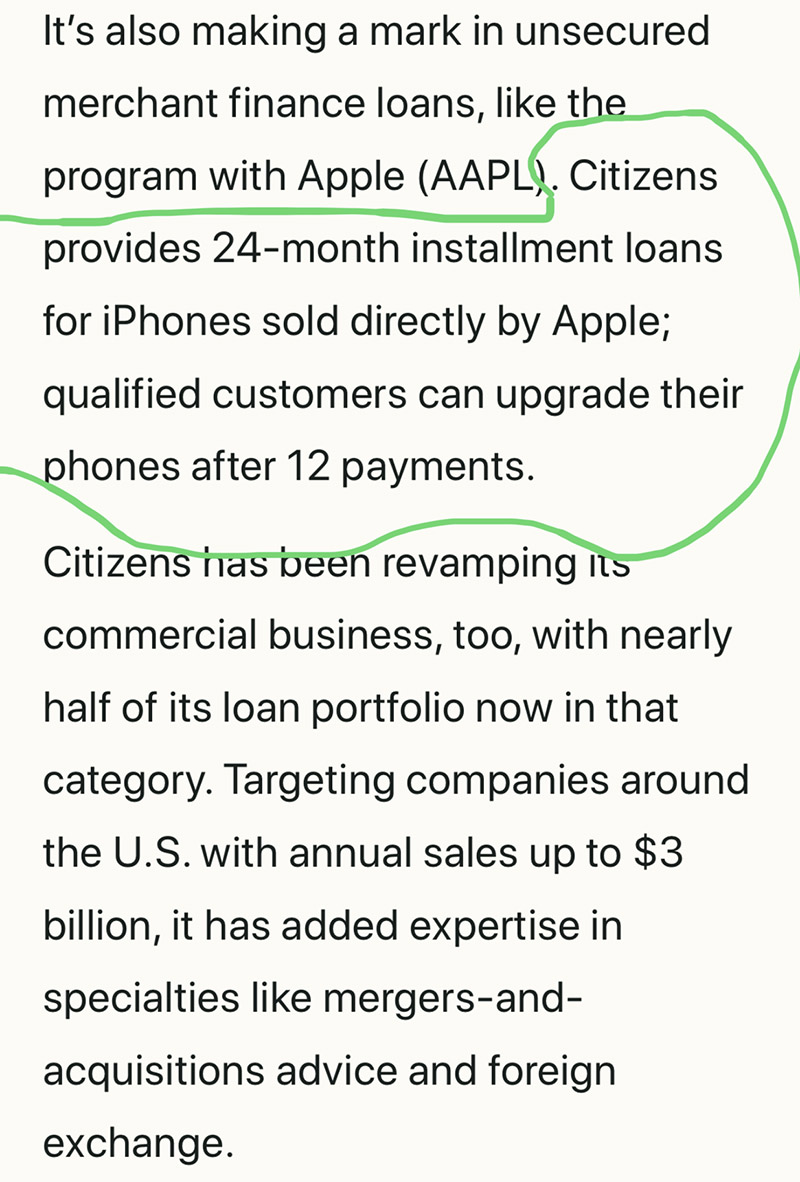
Clearing Storm and weekend photos
Rainy Weekend
The State of Journalism, 2018
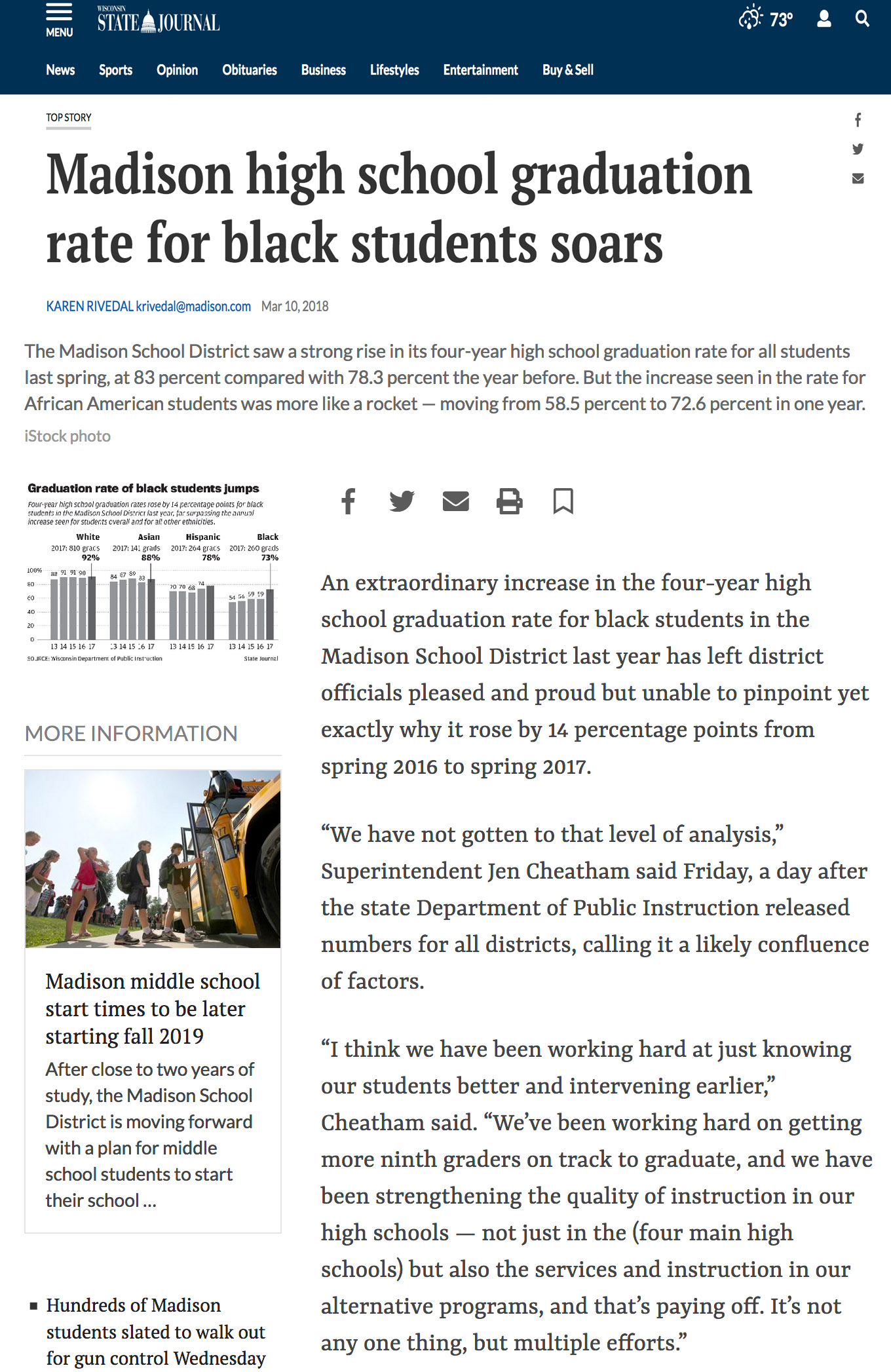
March 10, 2018: The Wisconsin State Journal published “Madison high school graduation rate for black students soars”.
September 1, 2018: “how are we to understand such high minority student graduation rates in combination with such low minority student achievement?”
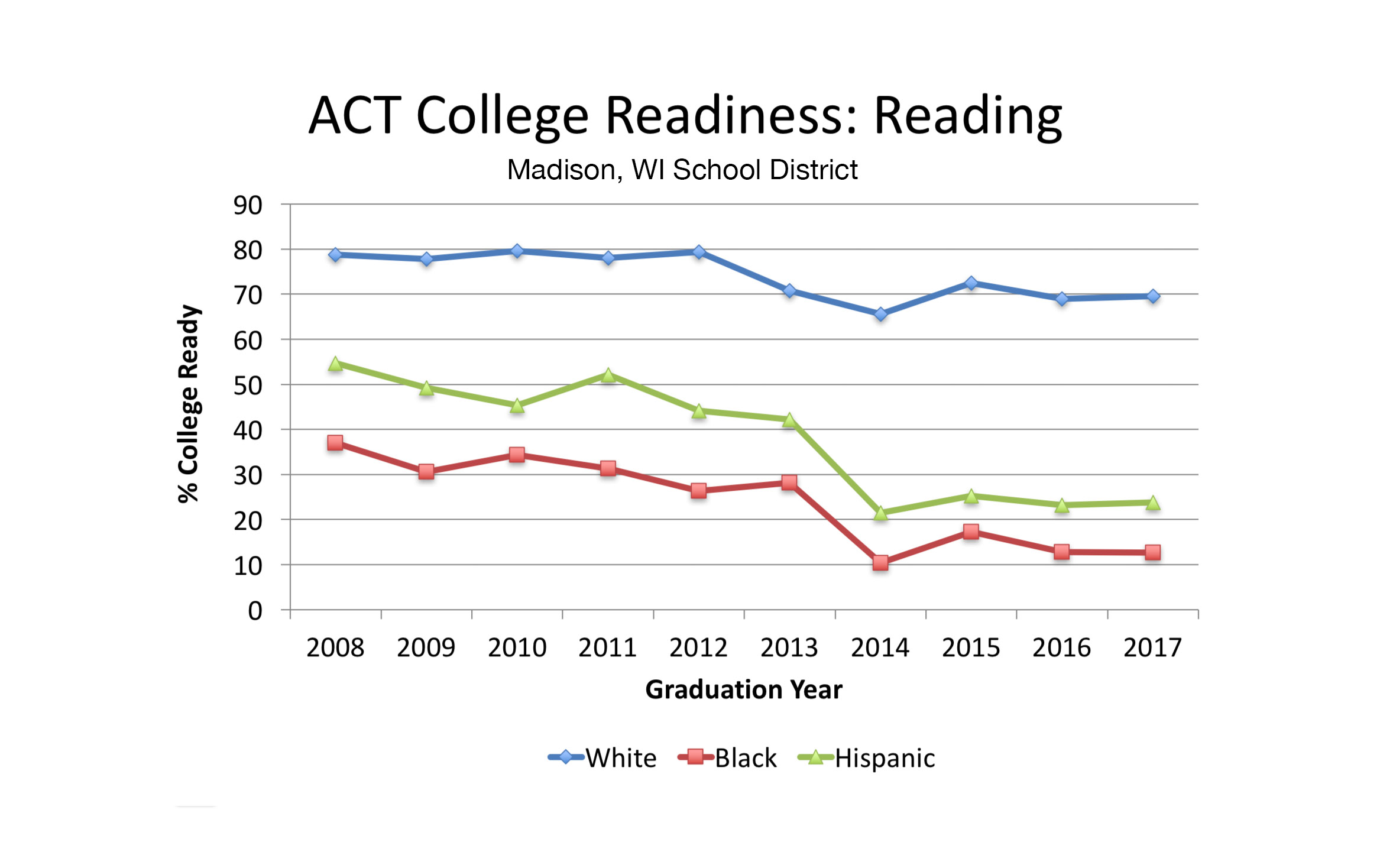
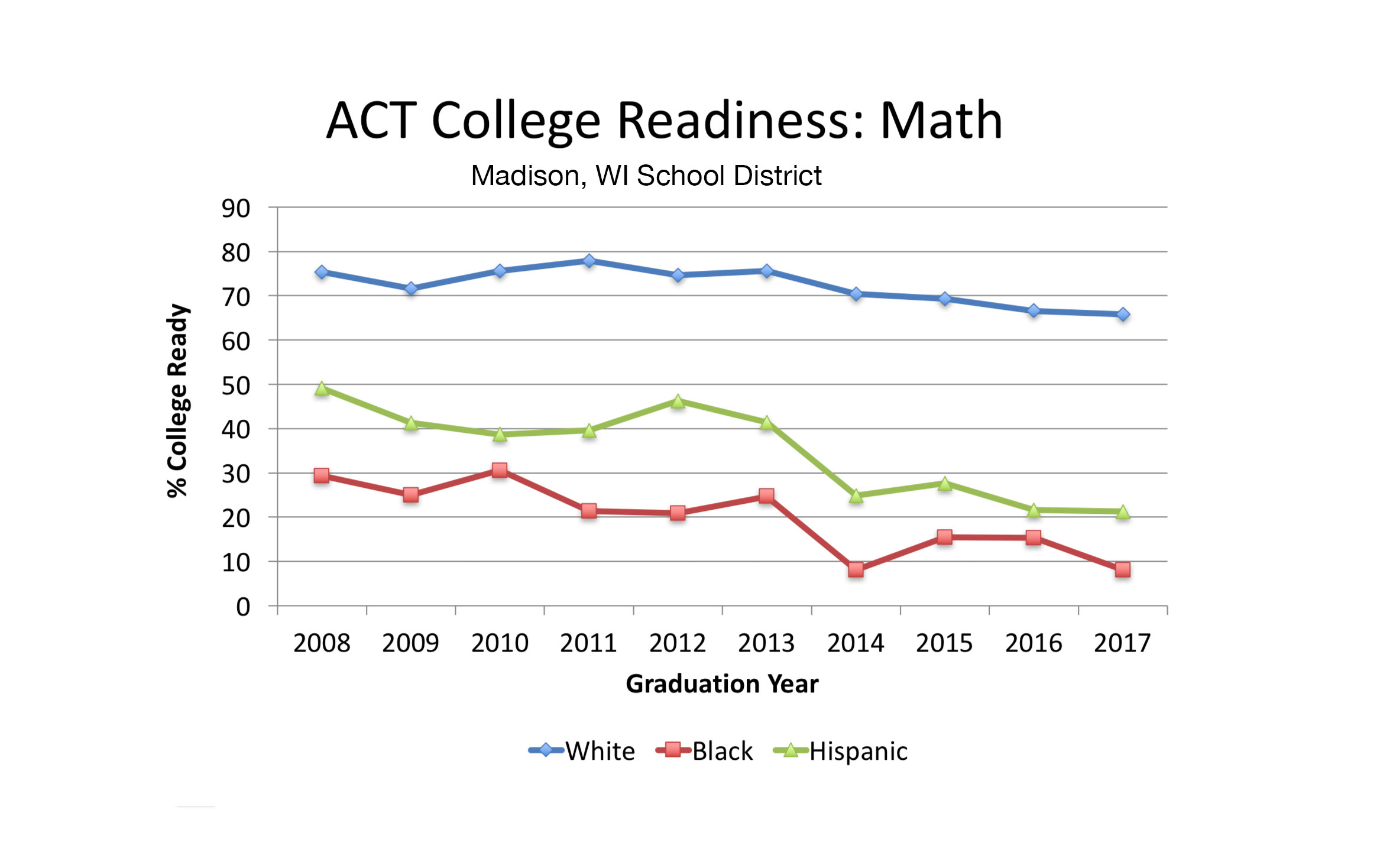
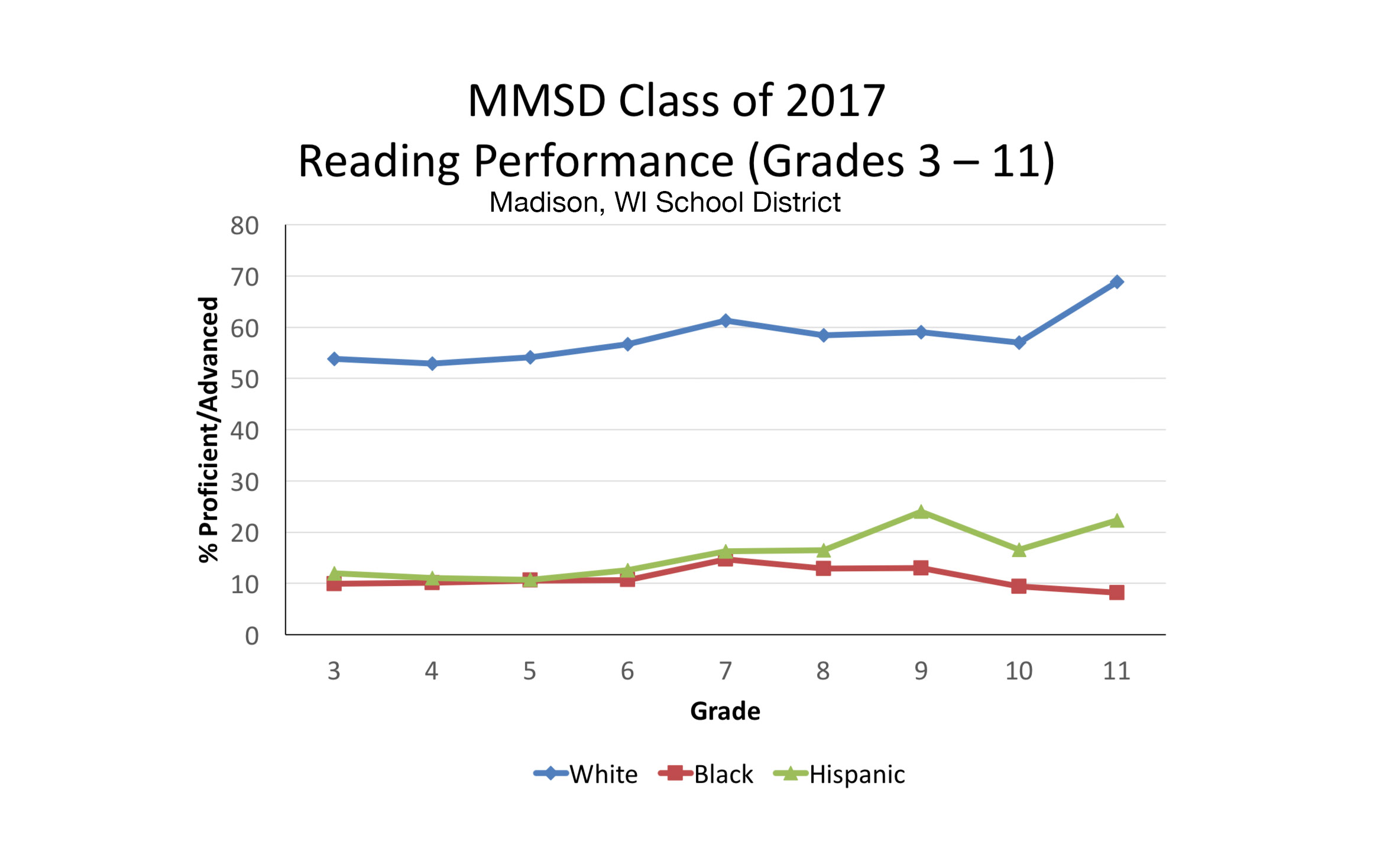
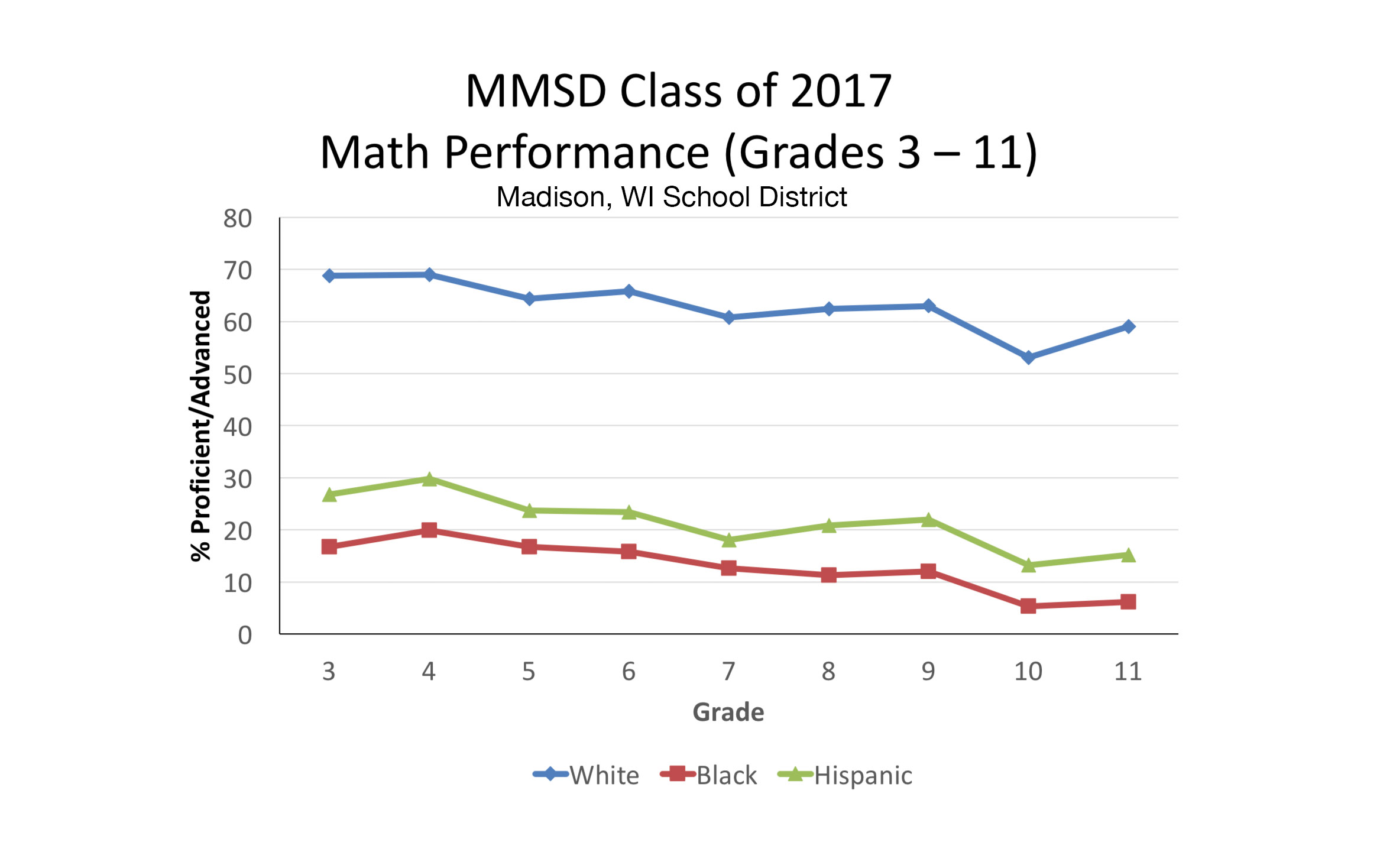
2005:
On November 7, Superintendent Art Rainwater made his annual report to the Board of Education on progress toward meeting the district’s student achievement goal in reading. As he did last fall, the superintendent made some interesting claims about the district’s success in closing the academic achievement gap “based on race”.
According to Mr. Rainwater, the place to look for evidence of a closing achievement gap is the comparison of the percentage of African American third graders who score at the lowest level of performance on statewide tests and the percentage of other racial groups scoring at that level. He says that, after accounting for income differences, there is no gap associated with race at the lowest level of achievement in reading. He made the same claim last year, telling the Wisconsin State Journal on September 24, 2004, “for those kids for whom an ability to read would prevent them from being successful, we’ve reduced that percentage very substantially, and basically, for all practical purposes, closed the gap”. Last Monday, he stated that the gap between percentages scoring at the lowest level “is the original gap” that the board set out to close.
Unfortunately, that is not the achievement gap that the board aimed to close.
In 1998, the Madison School Board adopted an important academic goal: “that all students complete the 3rd grade able to read at or beyond grade level”. We adopted this goal in response to recommendations from a citizen study group that believed that minority students who are not competent as readers by the end of the third grade fall behind in all academic areas after third grade.
2006: “They’re all Rich White Kids, and they’ll do just fine, NOT!”
2011: On the 5-2 Madison School Board No (Cole, Hughes, Moss, Passman, Silveira) Madison Preparatory Academy IB Charter School Vote (Howard, Mathiak voted Yes)
2013: Madison’s long term, disastrous reading results.
The Simpson Street Free Press (!) digs: Are Rising MMSD Grad Rates Something to Celebrate?, and digs deeper: Madison’s ACT College Readiness Gap.
Madison Newspapers, Inc. (Capital Newspapers, Inc.) which publishes the Capital Times and the Wisconsin State Journal, generates revenues of around $61,000,000 annually. Lee Enterprises owns 50% of Madison Newspapers, Inc. The following chart is from their May 5, 2018 10Q (SEC Filings).
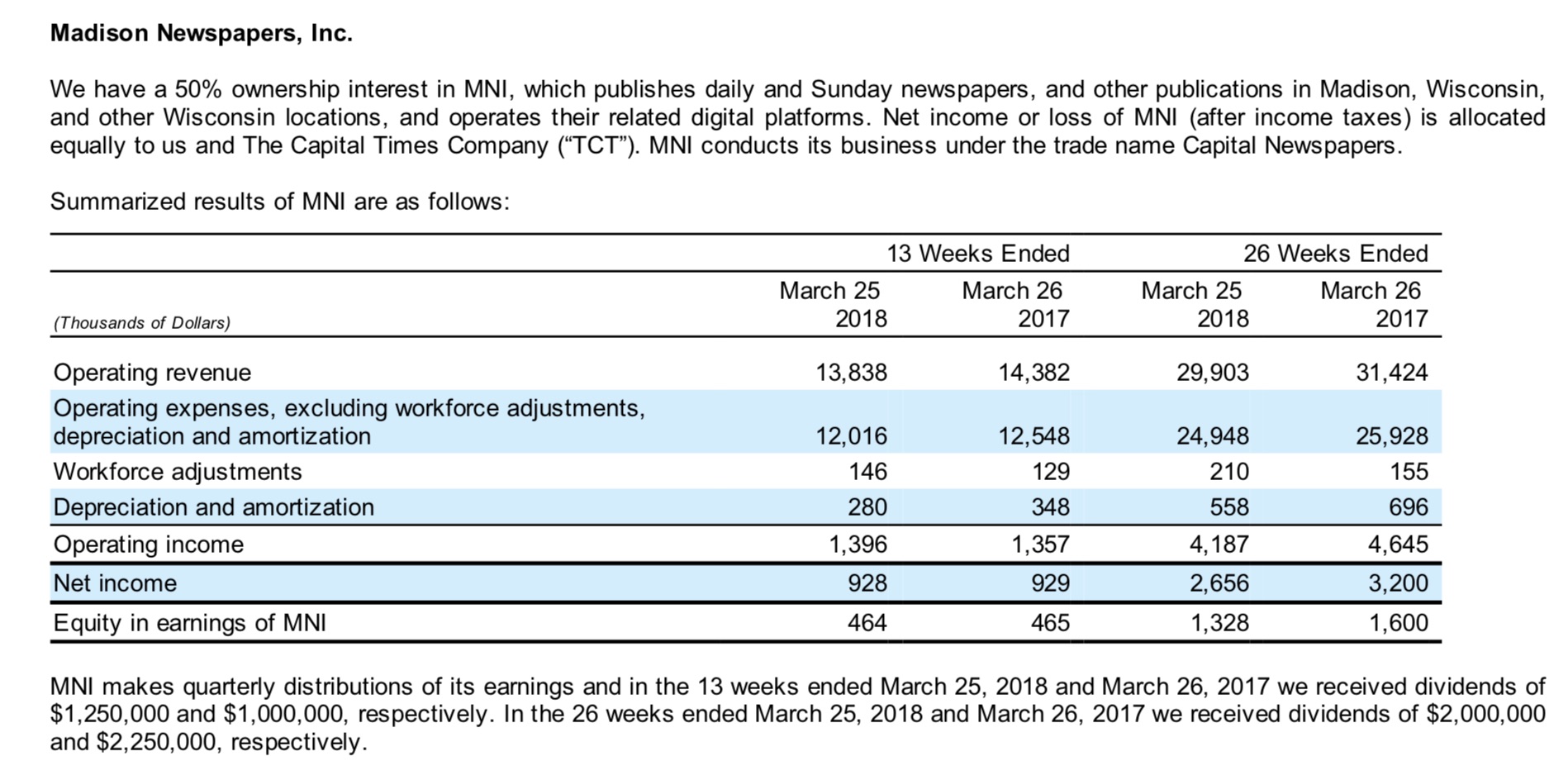
In closing, Madison spends far more than most K-12 taxpayer funded organizations.
Federal taxpayers have recently contributed to our property tax base.
Walking, around
(Self) Promotion
(Self) promotion, in recent photos:
Competitive Shopping.
One must always try to buy ahead of Tory Miller.
And, earlier today, while voting, our polling location attracted unusual media attention.
Presumably, someone orchestrated the time, place and atmospherics.
Finally, a pleasant voter’s evening sketch, on her iPad:
Happy Tuesday.
Madison’s Property Tax Base Growth; $38B+ Federal Taxpayer EMR Subsidy
Recent news that Madison’s “total property values” top Milwaukee’s for the first time piqued my interest in the growing $38,220,758,479.00 federal taxpayer subsidy to organizations purchasing electronic medical records. Note that the $38B has been spent since 2011.
I created a chart illustrating Madison’s property tax base from 1977-2018 using data from the City Assessors office.
I displayed the federal taxpayer $38,220,758,479.00 (growing) subsidy from the date of the first payment (May, 2011) through June, 2018.
Tap for a larger version.
Background links:
How the Cleveland Clinic grows healthier while its neighbors stay sick .
Why Americans are avoiding the doctor.
On the Growth of Epic Systems:
Part of the company’s recent growth has stemmed from $30 billion in federal incentives included in the recovery act passed in 2009 during the financial crisis.
The incentives were designed to give a final shove to hospitals and physicians to make the costly and difficult transition from paper records to electronic records.
In 2008, only 1.5% of U.S. hospitals had a comprehensive system for electronic records implemented in all major clinical units, and an additional 7.5% had a basic system that included certain features in at least one unit, according to the results of a survey published in the New England Journal of Medicine.
Even fewer physician practices had made the transition.
By 2014, 75.5% of hospitals had at least a basic system, according to an annual survey.
Before the federal incentives, academic medical centers, hospitals that were part of health systems and large physician practices were most likely to have begun the transition to electronic health records. Epic focuses on those customers. But the incentives have contributed to the surge in the company’s growth.
That, though, has come at a price.
Epic’s size and success have made it a target for critics of electronic health records and the way the $30 billion federal program has evolved.
Critics contend that the systems are difficult to use, that entering information is time-consuming and detracts doctors from focusing on patients, that the records frequently are cluttered with unneeded information and that hospitals and physicians often can’t exchange information.
David Dranove, Craig Garthwaite, Christopher Ody, Bingyang Li:
In February 2009 the U.S. Congress unexpectedly passed the Health Information Technology for Economic and Clinical Health Act (HITECH). HITECH provides up to $27 billion to promote adoption and appropriate use of Electronic Medical Records (EMR) by hospitals. We measure the extent to which HITECH incentive payments spurred EMR adoption by independent hospitals. Adoption rates for all independent hospitals grew from 48 percent in 2008 to 77 percent by 2011. Absent HITECH incentives, we estimate that the adoption rate would have instead been 67 percent in 2011. When we consider that HITECH funds were available for all hospitals and not just marginal adopters, we estimate that the cost of generating an additional adoption was $48 million. We also estimate that in the absence of HITECH incentives, the 77 percent adoption rate would have been realized by 2013, just 2 years after the date achieved due to HITECH.
Subsidies given for computerizing, but no reporting required when errors cause harm:
President Obama and Congress poured $30 billion in taxpayer subsidies into the push for digital medical records beginning in 2009, with only a few strings attached and no safety oversight of the vendors who sell the systems.
The move was touted as a way to improve patient care and help rein in medical costs. Five years later, the explosion in the use of the electronic records has created the potential for efficiencies and safety benefits but also new risks for patients, the scope of which still is not fully understood.
But the scramble by doctors and hospitals to cash in on the incentives has thrust complex, balky, unwieldy, and error-prone computer systems into highly sensitive clinical settings at a record pace. From 2008 to 2013, the percent of US doctor’s offices with electronic health records rose from 17 to 48 percent. Growth in hospitals was even more dramatic, from 13 to 70 percent.
Officials at Epic Systems are not commenting on a New York Times report Wednesday that the firm was central in lobbying Congress on a $19 billion “giveaway” (now $37B and growing) to convert all U.S. medical records from paper to computers.
The story contends that executives of the largest digital records companies — including Epic, Cerner and Allscripts — poured hundreds of thousands of dollars into a behind-the-scenes effort to promote the use of electronic records, effectively pushing aside smaller competitors.
Those efforts paid off handsomely in 2009, when legislation promoting the use of electronic medical records was included in President Obama’s economic stimulus bill. The $780 billion package included nearly $20 billion in incentives aimed specifically at software made by Epic and others.
The stimulus package also included penalties for doctors who don’t adopt the new technology. Providers who don’t install electronic records by 2014 will face reductions in their Medicare reimbursements.
2007 Then Wisconsin Governor Doyle’s proposed $30,000,000 state EMR subsidy.
Big Brother in the Exam Room: The Dangerous Truth about Electronic Health Records 1st Edition:
There are serious dangers lurking behind the government’s $30 billion electronic health record (EHR) experiment. This omnipresent technology turns doctors into data clerks and shifts attention from patients to paperwork–while health plans, government agencies, and the health data industry profit. Patients who think the HIPAA ”privacy” rule protects the confidentiality of their medical information will be shocked to discover it makes their medical records an open book.
City of Madison Assessor.
Unfortunately, this $38,220,758,479.00 and growing taxpayer subsidy has failed. We lack medical record interoperability and costs have continued to grow, substantially. US Federal Debt data…
I’ve found it curious that this far larger taxpayer subsidy has gone unmentioned when the $4B FoxConn subsidy has been tossed about within the political theatre.
Memorial Union, Now with a Shopping Mall
VW: Then, and Now
Then: Think Small
2018: Think Big
The “size matters” billboard is, ironically, next to a bike shop and, perhaps more tellingly, a Volvo and Range Rover car dealership.
Volkswagen, Ivan Hurst and an interesting book about the much smaller Camper Van.
Transporter pickup photo.
“It currently won’t go in reverse“.
A few campers at Alaska’s Resurrection Bay.












